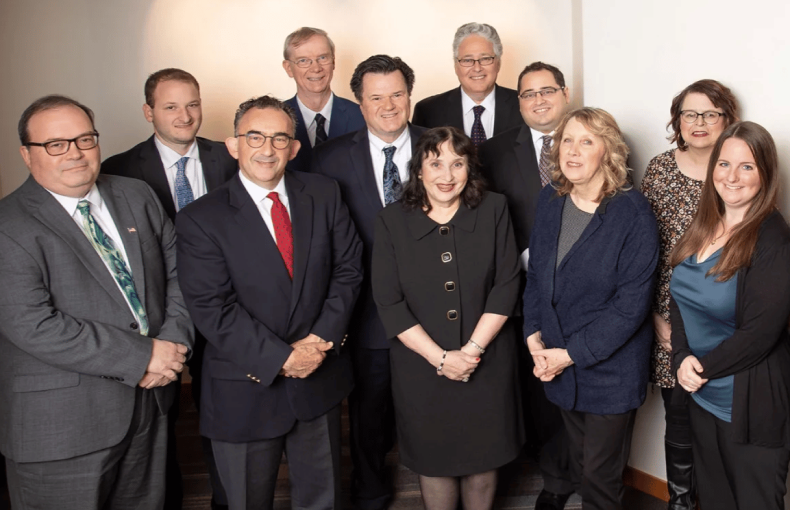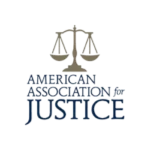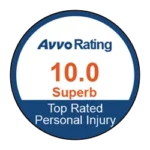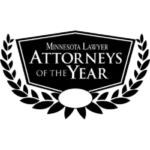What are the most common car accident injuries in Minnesota?
In 2021, at least 24,083 people were injured in car accidents across the state of Minnesota. These injuries range from minor scrapes and bruises to more common injuries that fundamentally shift the course of a person’s life.
Given the nature of car accidents, drivers and vehicle passengers are susceptible to certain types of trauma. Here is a look at some of the most common car accident injuries in Minnesota crashes.

Home » What are the most common car accident injuries in Minnesota?
- Whiplash
- Sprains and Strains
- Bruises and Contusions
- Minor Scrapes
- Broken Bones
- Facial Injuries
- Neck Injuries
- Brain Injuries
- Injuries to the Spine
- Burns
- Chest Injury
- How long after a car accident can injuries appear?
- Who could be liable for my car accident injuries?
- How Milavetz Law P.A. Can Help You Fight to Get Compensation for Your Car Accident Injuries
Whiplash
It is estimated that three million people across the nation suffer whiplash in car accidents every year. Whiplash is a soft tissue injury in the neck that occurs when the head moves back and forth rapidly in a collision.
This rapid whip-like movement causes the neck muscles and tissue to overextend. Crash victims who suffer from whiplash often experience neck pain, difficulty turning their heads, tingling or tenderness in the back and neck, and blurred vision.
Sprains and Strains
Sprains and strains are two types of common soft tissue injuries that car accident victims experience.
A sprain is an injury to a ligament, which are pieces of fibrous tissue that connect our bones. Common car accident sprains include ankle sprains, knee sprains, and wrist sprains.
A strain involves an injury to tendons or muscles. Tendons are pieces of fibrous tissue that attach muscle to bones. It is common to strain your back or leg in a car accident.
Bruises and Contusions
Bruises and contusions are soft tissue injuries that occur when you experience blunt force trauma to a muscle. The force of trauma ruptures blood vessels under the skin. This causes the affected area to appear purple or blue.
Minor Scrapes
Cuts, scrapes, and lacerations are incredibly common car accident injuries. These can happen when the skin rubs up against a sharp surface—such as broken glass or jagged metal—or when debris flies through the car in a wreck. Untreated, minor scrapes and cuts can become infected and lead to more serious secondary injuries.
Broken Bones
It is estimated that 6 million people suffer broken bones every year, and many of these are attributed to motor vehicle accidents.
Broken bones can occur if a vehicle is crushed, if occupants make forceful contact with the dashboard, steering wheel, or windows, or if passengers are thrown from a vehicle in a collision.
Bones commonly broken in car accidents include vertebrae in the neck and back, pelvis, fibula (lower leg), clavicle (chest), and ribs.
Facial Injuries
Bones in the face are also susceptible to fractures in a car accident. Vehicle occupants can strike their heads on the steering wheel, dashboard, headrests, doors, and windows and sustain broken skulls, cheekbones, and jaws.
Expanding airbags can also pack a punch and cause serious facial injuries. Eye injuries and resulting vision loss are not uncommon car accident-related trauma.
Neck Injuries
Whiplash isn’t the only neck injury you can experience in a car accident. The neck is an incredibly complex part of the body, and even the slightest overextension, hyperextension, or blunt force trauma can cause serious damage. Common neck injuries include herniated discs, sprains and strains, facet joint injuries, and pinched nerves.
Brain Injuries
A traumatic brain injury involves disruption to normal brain function, typically as the result of a bump, blow, or jolt to the head. Car accidents are a leading cause of traumatic brain injuries, accounting for 17.3 percent of TBIs reported annually.
Common car accident-related brain injuries include skull fractures, contusions, coup-contrecoup brain injury, concussion, and hematomas.
Injuries to the Spine
The spine is a system of muscle, tissue, bones, and nerves that runs from the base of the skull down the back to the tailbone. It houses the spinal cord, which is responsible for relaying messages between the brain and other parts of the body.
In a car accident, it is possible for the spine and/or spinal column to become damaged. Trauma can result in serious and potentially life-changing complications, including paralysis, limited mobility, respiratory issues, and cardiac problems.
Common car accident-related injuries to the spine include herniated discs, ruptured discs, spinal fractures, spinal stenosis, and spondylolisthesis.
Burns
In some instances, motor vehicle occupants can suffer severe burns in an auto accident. This can happen when the person comes into contact with hot gasoline, oil, or metals, or when gas tanks explode and start fires.
Chest Injury
The National Highway Traffic Safety Administration estimates that 80 percent of all car accident victims experience an injury to the head or chest. That is more than 19,000 car accident-related head and chest injuries in Minnesota annually.
Chest injuries can occur when seat belts tighten in a collision or if a vehicle occupant strikes a hard fixed object, like the steering wheel or dashboard. Common chest injuries include broken ribs, internal bleeding, a ruptured diaphragm, and internal organ damage.
How long after a car accident can injuries appear?
Some injuries—like compound fractures and facial injuries—will be evident right after a car accident. Others—like whiplash or a chest injury—could take hours or days before you recognize signs and symptoms.
Many times, people experience a surge of adrenaline in a car accident. The rush of adrenaline can mask symptoms of serious injuries, causing you to miss signals from your body that something is not right. The longer injuries are allowed to linger untreated, the greater the risk of infection, complications, and death.
This is why seeking emergency medical care at a hospital near you immediately after a car accident is critical. Prompt care can ensure all your crash-related injuries are identified and subject to appropriate treatment.
Who could be liable for my car accident injuries?
Minnesota has “no-fault” rules in place for car accidents. After a crash, you are required to file a claim with your car insurance company to recover benefits from your auto insurance policy. This is the case even if you aren’t at fault for the wreck.
If the costs of your car accident exceed your policy limits, you can then potentially file a claim or lawsuit against a liable third party. Depending on the specific details of your crash, liable parties might include:
- The driver of another passenger vehicle
- An Uber or Lyft driver
- A motorcyclist
- A truck driver
- A truck company
- A bicyclist
- A pedestrian
- The Employer of a negligent party
- A bus driver
- A bus company
- The vehicle manufacturer
- The government agency responsible for road design and maintenance or the operation of a public transit service
A thorough investigation into your car accident can help to identify everyone who directly and indirectly contributed to your collision.
How Milavetz Law P.A. Can Help You Fight to Get Compensation for Your Car Accident Injuries
If you are struggling with painful, debilitating physical injuries because of a car accident, you should not have to fight an insurance company to get the compensation you need to cover the costs of your medical bills, lost wages, and suffering.
That is where the Minneapolis car accident lawyers at Milavetz Law P.A. can help. We are award-winning trial attorneys who have been fighting on behalf of Minnesota crash victims since 1963.
We are here to help you make the best of your situation. Our team is prepared to handle every aspect of your claim while you focus on getting better. We will investigate, gather evidence, fend off claims of shared fault, and work hard to build a strong, persuasive case so you get every cent you deserve.
Contact our law offices in Minnesota—with 12 convenient locations across the state—to arrange a free consultation and learn more.
Discuss Your Legal Questions With A Member Of Our Team
"*" indicates required fields




Speak to an Attorney Today
Let Us Help You With Your Financial Help & Compensation Options


